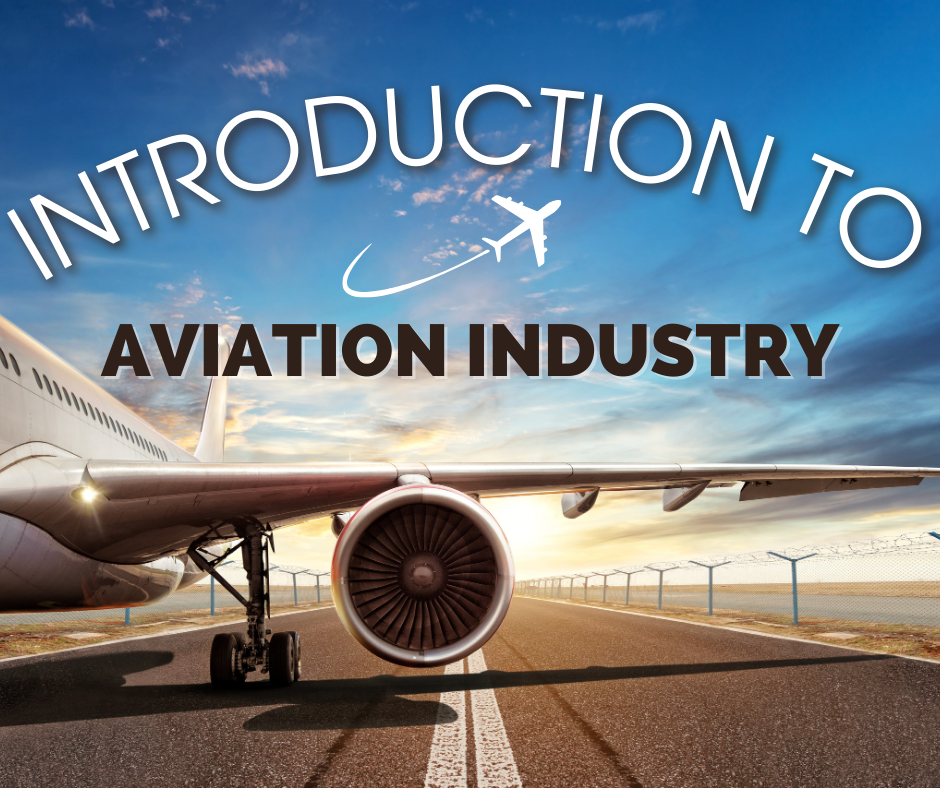
Level 1 Award in Introduction to Aviation Industry
- Gain a broad understanding of how the aviation industry operates.
- Explore different career options within airports, airlines, and support services.
- Learn about essential aviation terminology and regulatory bodies.
- Build foundational knowledge for higher-level aviation studies or apprenticeships.
- Understand safety, customer service, and operational basics in the aviation environment.
- Identify the main sectors and stakeholders within the aviation industry.
- Describe the functions of airports, airlines, and regulatory organizations.
- Understand key concepts of air travel, ground handling, and airport operations.
- Recognize common safety, security, and environmental considerations in aviation.
- Demonstrate awareness of customer service and communication skills in aviation settings.
- Introduction to the Aviation Industry
- History and evolution of aviation
- Overview of civil, military, and general aviation
- Role of aviation in global transport and trade
- Airports and Airlines
- Functions and layout of airports (airside vs. landside)
- Types of airlines: full service, low-cost, cargo, charter
- Roles and responsibilities in airline and airport operations
- Aviation Stakeholders and Regulatory Bodies
- Key global and regional bodies (ICAO, IATA, FAA, EASA)
- National aviation authorities and their functions
- Airport ownership and airline alliances
- Ground Operations and Support Services
- Passenger handling, baggage services, aircraft turnaround
- Ground service equipment and ramp operations
- Catering, cleaning, refueling, and security screening basics
- Safety, Security, and the Environment
- Overview of aviation safety culture
- Airport and aircraft security practices
- Environmental impacts and sustainable aviation initiatives
- Careers in Aviation
- Career pathways in air traffic control, cabin crew, engineering, ground services
- Required skills, qualifications, and progression routes
- Introduction to workplace behavior and aviation-specific professionalism
- School leavers or young adults exploring aviation careers
- Entry-level employees in airport or airline settings
- Individuals preparing for further vocational or academic aviation studies
- Career changers looking for an introduction to the aviation sector
- Progress to a Level 2 Certificate in Aviation Operations, Cabin Crew, or Airport Ground Services
- Seek entry-level employment in ground handling, check-in services, or customer assistance roles
- Pursue vocational training in aviation maintenance, air traffic services, or travel and tourism
- Accessible Entry Point: No prior aviation knowledge required
- Industry-Relevant Content: Aligned with real-world aviation roles and regulations
- Clear Progression Path: Leads directly into more specialized aviation qualifications
- Globally Relevant: Content reflects international practices and standards
Qualification Title: Level 1 Award in Introduction to the Aviation Industry
Level: 1
Type: Award
Total Qualification Time (TQT): 60 hours
Guided Learning Hours (GLH): 45 hours
Credit Value: 6 credits
Assessment Method: MCQ-based
Grading: Pass
Delivery Mode: Blended (Online & Classroom)
Study Units Breakdown
| Unit Title | GLH | TQT | Credit | Assessment Type |
|---|---|---|---|---|
| Introduction to the Aviation Industry | 8 | 10 | 1 | MCQ-Based |
| Airports and Airlines | 8 | 10 | 1 | MCQ-Based |
| Aviation Stakeholders and Regulatory Bodies | 8 | 10 | 1 | MCQ-Based |
| Ground Operations and Support Services | 7 | 10 | 1 | MCQ-Based |
| Safety, Security, and the Environment | 7 | 10 | 1 | MCQ-Based |
| Careers in Aviation | 7 | 10 | 1 | MCQ-Based |
By the end of this course, learners will be able to:
- Identify the main sectors and stakeholders within the aviation industry.
- Describe the functions of airports, airlines, and regulatory organizations.
- Understand key concepts of air travel, ground handling, and airport operations.
- Recognize common safety, security, and environmental considerations in aviation.
- Demonstrate awareness of customer service and communication skills in aviation settings.
This award is ideal for:
- School leavers or young adults exploring aviation careers
- Entry-level employees in airport or airline settings
- Individuals preparing for further vocational or academic aviation studies
- Career changers looking for an introduction to the aviation sector
Our assessment process is designed to ensure every learner achieves the required level of knowledge, skills, and understanding outlined in each course unit.
Purpose of Assessment
Assessment helps measure how well a learner has met the learning outcomes. It ensures consistency, quality, and fairness across all learners.
What Learners Need to Do
Learners must provide clear evidence that shows they have met all the learning outcomes and assessment criteria for each unit. This evidence can take different forms depending on the course and type of learning.
Types of Acceptable Evidence
Assignments, reports, or projects
Worksheets or written tasks
Portfolios of practical work
Answers to oral or written questions
Test or exam papers
Understanding the Structure
Learning outcomes explain what learners should know, understand, or be able to do.
Assessment criteria set the standard learners must meet to achieve each learning outcome.
Assessment Guidelines
All assessment must be authentic, current, and relevant to the unit.
Evidence must match each assessment criterion clearly.
Plagiarism or copied work is not accepted.
All learners must complete assessments within the given timelines.
Where applicable, assessments may be reviewed or verified by internal or external quality assurers.
Full learning outcomes and assessment criteria for each qualification are available from page 8 of the course handbook.
Top Courses
Related Courses
Let's Get in touch
Deleting Course Review
Course Access
This course is password protected. To access it please enter your password below:



